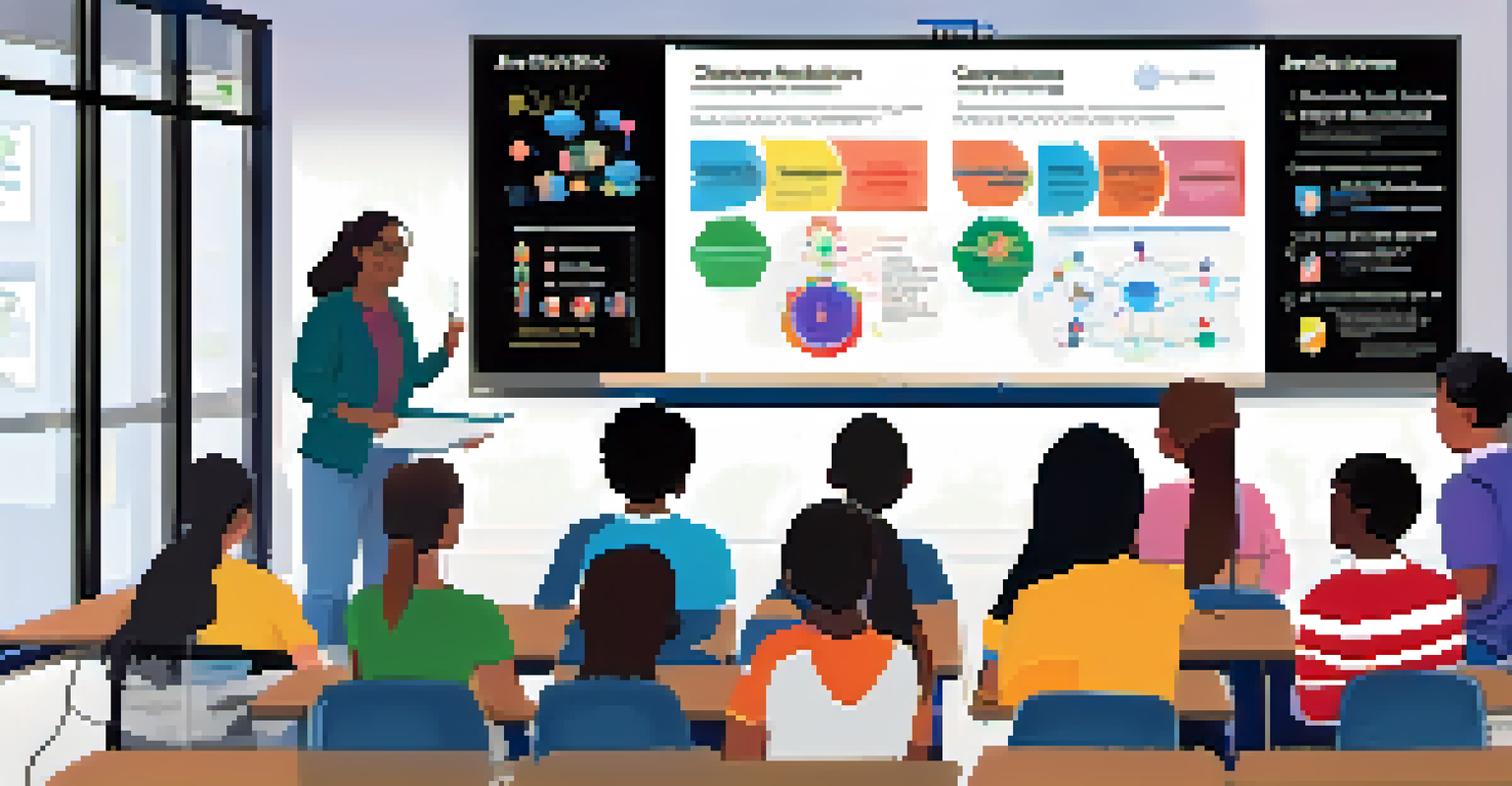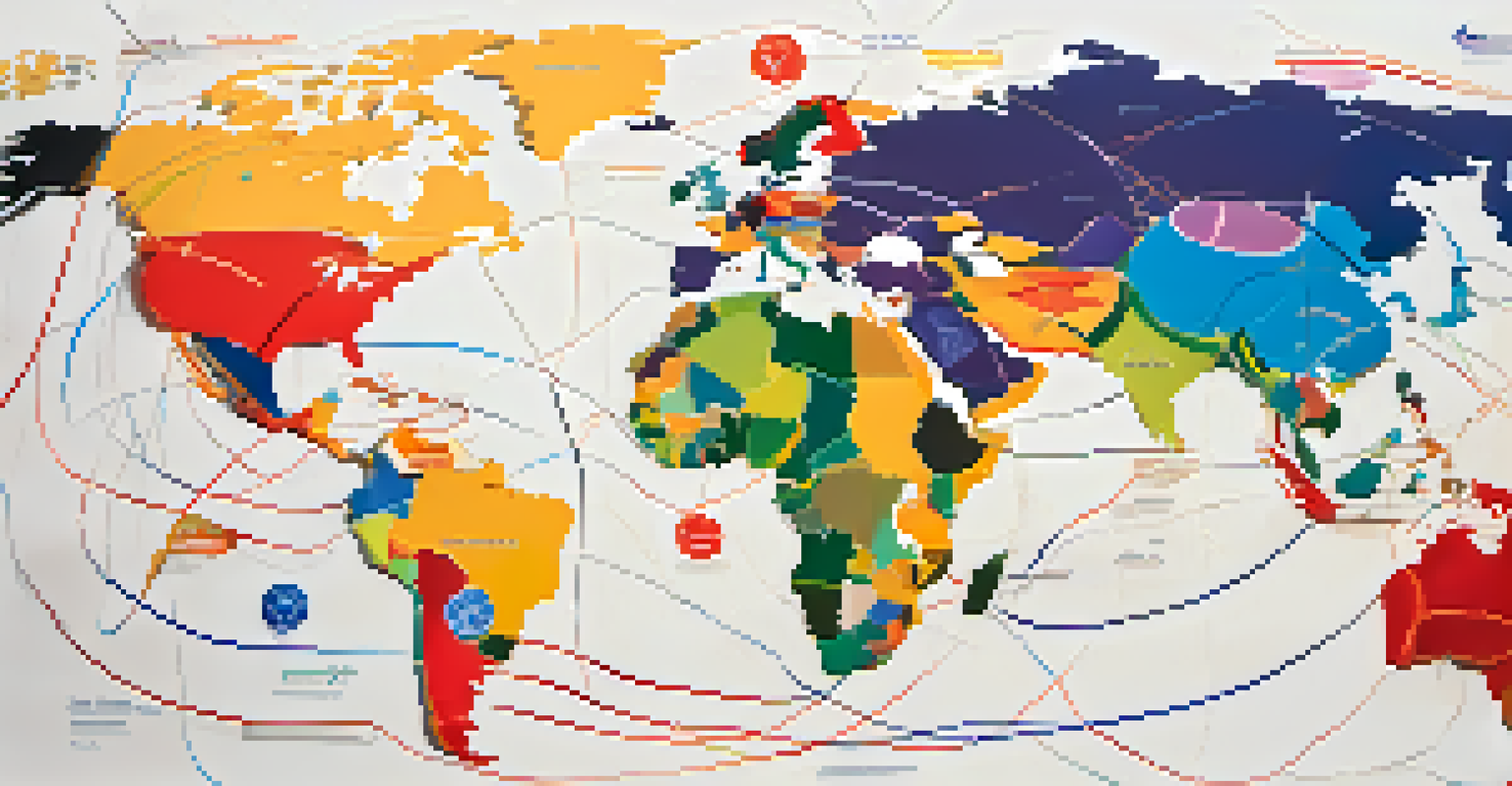Combatting Antimicrobial Resistance: A Global Health Effort

Understanding Antimicrobial Resistance and Its Impact
Antimicrobial resistance (AMR) occurs when microorganisms evolve to resist medications that once effectively treated them. This phenomenon poses a significant threat to global health, leading to increased healthcare costs, prolonged hospital stays, and higher mortality rates. Imagine a world where simple infections could once again become deadly; that’s the reality we face with rising AMR rates.
The greatest threat to global health today is antimicrobial resistance.
The World Health Organization (WHO) has identified AMR as one of the top ten global public health threats, emphasizing the urgency of addressing this issue. Antibiotics that were once considered a miracle of modern medicine are losing their effectiveness, which can turn routine surgeries and chemotherapy into life-threatening procedures. It’s like trying to fix a car with a broken tool; without effective antibiotics, our medical practices are at risk.
Understanding AMR is crucial for everyone, from healthcare professionals to the general public. By recognizing how our actions contribute to resistance—such as over-prescribing antibiotics or failing to complete prescribed courses—we can take steps to combat this growing issue together.
The Role of Healthcare Providers in Combating AMR
Healthcare providers play a pivotal role in the fight against antimicrobial resistance. They are often the first line of defense in prescribing antibiotics and must be judicious in their choices. For instance, by practicing antibiotic stewardship, providers can ensure that antibiotics are only used when absolutely necessary, reducing the likelihood of resistance developing.

Patient education is another vital aspect of a healthcare provider's responsibility. By explaining the importance of completing prescribed antibiotic courses and discussing the risks of misuse, providers can empower patients to make informed decisions regarding their health. Think of this as teaching someone how to plant a garden; proper knowledge leads to a flourishing outcome.
AMR Threatens Global Health
Antimicrobial resistance (AMR) poses a significant risk to global health, leading to increased healthcare costs and higher mortality rates.
Moreover, healthcare systems need to implement guidelines and protocols that promote responsible antibiotic use. By fostering a culture of collaboration among providers, hospitals can create an environment where the focus is on the health of patients, which ultimately supports the fight against AMR.
Public Awareness and Education on AMR
Raising public awareness about antimicrobial resistance is crucial in the global fight against this issue. Many people remain unaware of the potential dangers posed by misusing antibiotics, which can lead to disastrous consequences. Imagine being in a crowded room where everyone is talking loudly; if no one listens, important messages can easily be lost.
Without urgent action, antibiotic resistance will lead to a future where common infections and minor surgeries can become deadly.
Educational campaigns can help inform the public about when antibiotics are appropriate and the importance of following medical advice. Communities can organize workshops, distribute pamphlets, and leverage social media platforms to spread awareness. This grassroots approach can create a ripple effect, empowering individuals to take charge of their health responsibly.
Additionally, engaging schools and local organizations in these educational efforts can foster a culture of responsible antibiotic use from a young age. When children learn about the importance of antibiotics and how to use them wisely, they are more likely to carry those lessons into adulthood.
The Global Nature of Antimicrobial Resistance
Antimicrobial resistance knows no boundaries; it is a global problem that requires a coordinated international response. Resistance can spread rapidly across countries through travel, trade, and food supply chains. This interconnectedness means that a resistant strain in one part of the world can quickly affect health systems elsewhere, making global cooperation essential.
Organizations like the WHO and the Centers for Disease Control and Prevention (CDC) advocate for a unified approach to combat AMR. By sharing data, resources, and strategies, nations can work collaboratively to implement effective solutions that reduce the spread of resistance. It's akin to a relay race; every participant must work together for the team to succeed.
Healthcare Providers' Key Role
Healthcare providers are crucial in combating AMR by practicing responsible prescribing and educating patients on proper antibiotic use.
Global initiatives, such as the Global Action Plan on AMR, emphasize the importance of multi-sector collaboration, involving healthcare, agriculture, and environmental sectors. This comprehensive approach acknowledges that AMR is not just a healthcare issue, but a challenge that affects food security and environmental health as well.
The Role of Research and Innovation in AMR Solutions
Research and innovation are critical in finding solutions to combat antimicrobial resistance. New antibiotics, alternative therapies, and rapid diagnostic tools are essential to stay ahead of evolving resistant strains. Imagine trying to outrun a sprinter; if you don’t train and innovate, you’ll inevitably fall behind.
Investments in research can lead to the discovery of new drugs that can effectively target resistant bacteria. Additionally, exploring alternative therapies, such as bacteriophage therapy, offers promising avenues for treatment. This kind of forward-thinking approach can help us build a robust arsenal against AMR.
Moreover, involving universities, research institutions, and pharmaceutical companies in the fight against AMR can lead to groundbreaking discoveries. Collaborative efforts can accelerate the development of innovative solutions, ensuring that healthcare providers have the tools they need to keep patients safe.
The Importance of Policy and Regulation in AMR Control
Effective policy and regulation are vital components in the fight against antimicrobial resistance. Governments must develop and implement legislation that promotes responsible antibiotic use and restricts over-the-counter sales of these medications. Think of it as setting up traffic lights; without proper regulations, chaos can ensue.
Creating national action plans that align with the WHO’s Global Action Plan on AMR can provide a framework for countries to manage and monitor antibiotic use effectively. Policies should address not only human health but also agriculture and veterinary practices, as these sectors play a significant role in antibiotic consumption.
Need for Global Cooperation
AMR is a global issue that requires coordinated efforts across nations to develop effective strategies and share resources.
Furthermore, enforcing regulations around the pharmaceutical industry, such as incentives for developing new antibiotics, can encourage innovation and responsible use. Strong policies can create an environment where both healthcare providers and patients prioritize safety and efficacy over convenience.
The Future of Combatting Antimicrobial Resistance
Looking ahead, the future of combatting antimicrobial resistance relies on our collective efforts across various sectors. Continued education, research, and policy development will be essential to curb the tide of resistance. Just as a ship requires a sturdy sail and a skilled crew to navigate stormy seas, we need a comprehensive approach to tackle AMR effectively.
As we work together, it’s crucial to remain vigilant and adapt to the evolving nature of resistance. By fostering a culture of collaboration among healthcare providers, researchers, and policymakers, we can create a sustainable strategy to combat AMR. Each of us has a role to play, whether it’s as a healthcare provider, researcher, or informed citizen.

Ultimately, a united front against antimicrobial resistance can help ensure that effective treatments remain available for future generations. By prioritizing this global health effort, we can protect the progress made in modern medicine and safeguard the health of individuals worldwide.